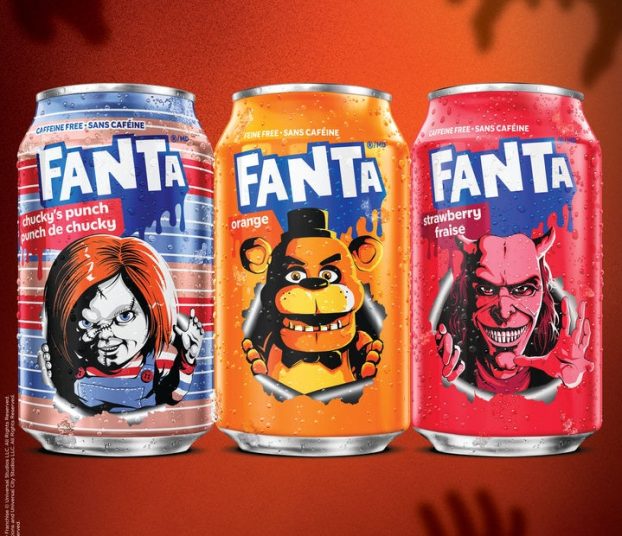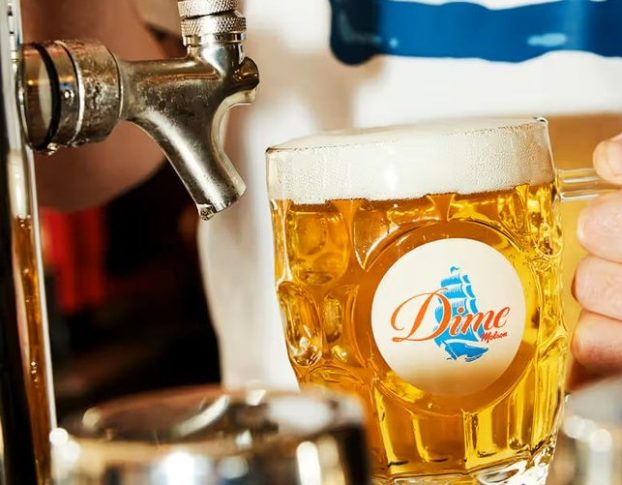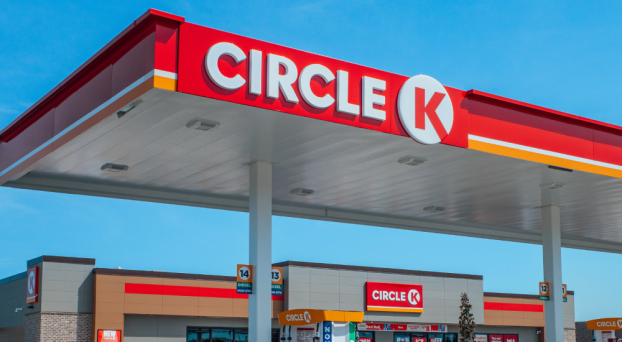From his first job as an art director with the Vancouver office of Bellingham, Wash.-based TV station KVOS, to the opening of his own ad agency with George Jarvis just over 25 years ago, Frank Palmer has built Palmer Jarvis into Western Canada’s dominant agency. His secret lies in maintaining a careful balance between a modern, diversified agency structure and old-fashioned attention to client service. Strategy talked to Palmer about his career in advertising. He began with a story that provides an anecdotal insight into one of the enduring principles that has helped Palmer’s agency keep its edge.
`We always drive a different route’
We were out trying to get a piece of new business. And the client asked, ‘What makes you, Frank, better than all the other guys?’
I said, ‘I will always take care of the hot dogs.’
‘What do you mean?’ he asked me.
‘I’ll make sure that we will take care of all the details,’ I said.
At this point, he got really, visibly, upset, and so I asked, ‘What’s the matter?’
He said:
‘That’s uncanny. When we were just opening a brand new store, we were advertising, and inviting families to come down to see it and enjoy some drinks and hot dogs.
‘The day of our opening – and we were spending all kinds of money – there were no hot dogs. I got on the phone to call our advertising agency, and they said, `We don’t do hot dogs. Here’s the name of a store where you can get them.’ ‘
Then, he paused.
‘You’re telling me that you do hot dogs.’
Yes.
It’s one of those things that our company has always understood. We didn’t come from the mentality that we would do a big television commercial or a big campaign and not worry about the details.
I always remember this story from the Bank of British Columbia, which was a client for 17 years before it was taken over by the Hongkong Bank.
We were in the bank’s boardroom with the president at the time, and the printer came in and delivered some business cards.
The president – new to the job – was quite excited and took out a business card that was so flimsy it folded over. The president said, pointing at the card and referring to the printer, ‘I don’t know who they are, but, obviously, they don’t know who I am. Get rid of them.’
We weren’t the printer, thank goodness. But what he was saying, obviously, was that if they can’t take care of the little details, they can’t take care of my annual report.
And, I’ve always said, we need to take care of the little details.
We’re in a very competitive business, so, we have to know who we’re up against when we present our cases to potential clients.
We call ourselves street-smart. Say, for instance, that out of habit you drive to work the same way every day. If you don’t drive a block or two on either side of your normal route, you’ll never know what’s going on.
I’d like to think that more often than not we always drive a different route. You can’t do great advertising without finding out what’s happening on the other side of the main road.
We have very flat management. We’re in touch with what’s taking place all the time. We do store checks. We go into the marketplace. Talk to people. We do a lot of research. And, if you don’t get out of your office, you don’t know what the hell’s going on.
There are no account people here that don’t work on business. I’m responsible for a number of accounts that I work on every day.
Twenty-five years ago, I didn’t know I was getting into the advertising business. I was an artist. All I knew was that I didn’t want to work for anybody else. I wanted my own business, and to earn my own keep and do something I really enjoyed. And, today, 25 years later, it’s been a dream. For me to come to work and do something I don’t consider workÉ how many people get that lucky?
From the very early days when I was a kid, I always used to be drawing something, sketching something.
Interestingly enough, it was about a year ago when I came across some old books of drawings I did when I was about six or seven years of age.
It was kind of neat to go back. I can actually remember doing them, sitting around the kitchen table just drawing Bugs Bunny, and Woody Woodpecker, and Sylvester the cat.
When I was going to high school, I was an artist. I enjoyed designing the year books, and the posters, and graphics they needed for various things around Kitsilano High here in Vancouver.
That led me to the Vancouver School of Art [now Emily Carr College of Art & Design.]
So, I went to art school for two and a half years, and found that most of the teachers or professors were more interested in going off and doing their own thing. They were doing freelance work for other companies.
So, I left school to work at [the Vancouver office of Bellingham, Wash.-based] television station kvos, and spent four to five years of my life there, doing their creative art for a lot of the advertising retailers – car dealerships and furniture stores – promotions that would include the tag ‘As advertised on kvos tv.’
It was part of a package that the station provided for advertisers. If you bought so much air time, you got so many window banners and shelf-talkers.
It was advertising experience that you wouldn’t get today. Not only did I do the production on the art work, but I had the chance to work on one of the first animation studios in Vancouver – a kvos division called Canarim, which produced all the first animation for the Beatles.
It gave me a diverse background into the various types of art work being done.
And, later, I worked for Western Direct Mail, a direct response company also here in Vancouver, as a production manager, artist and printer because I had this background. I probably spent four years there.
Meanwhile, I always did a lot of freelance work. I was a pretty good moonlighter. I was working three to four nights, sometimes seven nights a week. I’m still doing it. Things haven’t changed all that much except that the work’s bigger.
I was 29 when I started Palmer Jarvis in 1969, the year my son was born.
There were two gentlemen in town who had a little business. Red Robinson from rock ‘n’ roll, and Richard Simons who ran Trend Advertising. I was moonlighting for them, and doing an awful lot of their creative for them.
So, I said, ‘it seems you guys need a production manager and an artist inside, because both of you are capable of selling, but no one is capable of doing.’
Red eventually went into the radio business, which he is still doing to this day. And, Rich Simons and I stayed in the business and operated a 50-50 ownership until 1972, when we changed the name from Trend to Simons Palmer and Leckie.
Three people came to the company at that time: Linden Grove, who came from radio station chqm, where he was a writer and very creative person, as well as connoisseur of fine foods; Robin Leckie, and George Jarvis, a salesman of airtime at chqm.
In 1974, we changed the name to Palmer & Jarvis when Rich Simons left the company and Leckie left to publish the Kerrisdale Courier newspaper.
George and I operated for about 12 years together as real good partners. We used to be known as Laurel and Hardy. I was more outgoing and Jarvis was more laid-back.
He was more into sales and strategy, and I was more into creative and finished product. I never changed the name again after he left in 1989. It would have been foolish.
Today, there are 11 working shareholders in the five offices in all of the cities that we operate in. We have owner-operators. It’s our overall philosophy to have owners that will make a difference.
I’m president, chief executive officer and chief cheerleader. I think a lot of people around here would say I’m more heart and soul.
I like to think I provide a certain amount of confidence and commitment to the company and its people because the people here make the difference.
We truly know and believe we’re in the relationship business. Everything we do, all the products that we produce are a byproduct of the trust we’ve gained from our people, and, especially, our clients. Today, I’m as on the ground as I ever was.
I like to bring a lot of fun to the business. I take advertising seriously, but I don’t take myself seriously. I don’t want to live just to work. I want to work also to live.
We have a pristine account list. Most importantly, for me, is the relationship we’ve been able to gain and build with our clients.
For me, I can enjoy a client knowing fully well that we’ve done a great job for them. But, I can’t go out with a client and have a lunch or dinner or breakfast, knowing that we haven’t done a good job. A dinner won’t make up for your shortcomings.
We have a real social side to us with the majority of our clients. We have a great understanding of some of the people we’re working with, and have gained an awful lot of trust that goes beyond the business of advertising.
In the United States, advertising agencies usually lose their clients every 18 months to two years. Our average account has been with us eight or nine years.
Carter GM we’ve had for 25 years. McDonald’s Restaurants [Western Canadian Region] for 21 years. Safeway for 12 years. Sun-Rype for 12 years. Greyhound for about six years. Richmond Savings for three to four years. Mohawk [Oil] now for a couple years.
We’ve maintained our clients for a long time. If there’s another bit of philosophy I’ll say, it’s that we treat our business now that same way [as we did when] we gained it the very first day.
So often, what happens at a number of agencies is that they have a pitch team – made up of people who can stand up and pitch. And after the client is sold on the company, the client never sees that pitch team again.
When we present our credentials, we try to be better and have our key people in there.
Occasionally, the person dedicated to the account may not be the best presentation person in the world, but they’re better at follow-through and making sure the business is done.
With us, the team you see at pitch time is what you get later on. It’s made a difference for us, especially in the retention of clients.
The best client is an existing client. If you have a great relationship, and you’re always building their business, there is no reason for them to change.
We also have a checking measure in place where we ask the client to review us. We give them a form asking them how we’re doing. If there are flaws in some of the areas of doing business, it gives the client the chance to say so.
The advertising business today is becoming more complex as far as where you spend the money.
So often, it’s not mass media any more. It’s direct response, direct marketing.
And, before we even get into doing any creative for a client, we sit down together and narrow down what we want to achieve. It’s not ‘Here’s what I think’, go away, come back in a week. No, we’re going to go through this process together.
It makes the advertising business more honest today. We know ahead of time what we have to achieve. And, we get results, sometimes on a daily basis.
We know how successful our campaign’s going to be tomorrow. So, our compensation today isn’t always tied to commission.
Today, we’re on a lot of fee-for-service. And, sometimes, we’re on a performance bonus. We’re more accountable than ever before.
Clients are more demanding now than 25 years ago. They need results and they need to build their businesses.
I can use the analogy of a department store.
Department stores are all things to all people. You go there for socks and your television. There are now stores that sell television sets and do a better job of explaining to you what the tv is all about.
The department store mentality – and I’m not trying to knock department stores – doesn’t allow for specialists in each of the departments. The person who sells you the television could have been previously in the sock department.
Think of Palmer Jarvis today as a shopping mall with specialty services.
We’ve got seven divisions operating in the company from design studios to public relations to children’s marketing to direct response.
You can’t be a generalist in advertising. You have to be an expert.
At one point in time, when the economy was growing, and there was inflation, there was so much business out there that most clients were making money not knowing how they made it. But, advertising was part of the solution.
Today, we don’t have that much money out there, and we have to be targetted on what we do, whereas, 15 or 20 years ago, we got away with a lot.
The consumer has changed, too.
Today, we have to get right in there to know what the consumer wants. And, every consumer isn’t going to fall into two or three groups. They could fall in 25, or 30, or 40 groups.
Segmentation and finding out what consumers really want and need today is paramount. That’s why there are so many specialty stores out there.
After 25 years, what’s the biggest change? I’m more excited today than I was 25 years ago. I’ve seen my hairline recede.
At 54, I’m the oldest person in the company, but, at the same time, I believe I’m one of the youngest at heart.
I always remember the quote by Mark Twain, which I always thought was wonderfulÉ and it won’t be this exactly:
‘When I was 14 years of age, I thought my father was one of the dumbest people in the world. And, now that I’m 21, it’s amazing what he’s learned in those seven short years.’
Those are the kind of things that make more sense than a vision statement, or a mission, or purpose.
Most of our people who work hereÉ I would say the average age is 30 years or younger. What’s interesting to me is how smart they are today, what they know, how up they are on things, how they read a lot, go to a lot of movies, are interested in their careers and where they are going.
And, they won’t necessarily sit back and accept everything that you say. They challenge the hell out of you, and you have to have one hell of a good answer.
Sometimes, I don’t have that answer, and I’ll say to them, I don’t know, but I’ll find out for you. And, I like that. I like that.
I suppose that’s what keeps you young. They want to make a difference. They really believe in what they’re doing. I don’t want to do advertising for the sake of advertising. I want to do advertising that makes a difference.
I’ve always asked my staff to take some pride and give something back.
pj, right across our system, has put an awful lot back into things like Kinsman, Special Olympics, or Ronald McDonald Children’s Charities, Crimestoppers, you name it. There are so many different needs out there.
I have a couple of mentors. Bill Bremner is one from [Vickers & Benson Advertising], George Jarvis [pj president and chief executive officer], Ron Marcoux, from McDonald’s, and some of my other peers.
Low points for me were, one, when George Jarvis decided to leave; and, two, when the Bank of B.C. was sold to the Bank of Hongkong. It was one of the accounts that drove us to what we are today.
I always remember when we lost McDonald’s in Alberta – I took it very personally – but, we got it back two years later.
We weren’t doing the job. We weren’t doing it properly, or we weren’t paying attention to followup on what clients’ needs were. It teaches you a lesson.
Sometimes, something gives you a good kick in the butt, and you smarten up, and you get them back.
Three years later, after getting the account back, we were named McDonald’s’ agency of the year for 1993 out of all their agencies around the world.
On the high side, 25 years was a milestone.
Who would have thought this baker’s son would have an agency in Canada that is, one, today, the largest agency in Western Canada, and, two, one of only four agencies in Canada that are owned 100% Canadian.
Unity is an issue in Canada that’s going to come up in the future. Unity is going to be a huge issue when companies decide to stand up and be counted for what they believe in.
So, as they declare themselves, advertising for Canadian companies is going to be more in demand than ever before. A lot of companies are going to have to search, and truly try and find out who they are and what they stand for.
But, that difference will make a big difference for their futures.
If all things are equal, and one store has the same as another store, and the price is the same, and the service is the same, the consumers are going to go to the store they feel good about.
In Toronto, there are only about two or three Canadian companies left. Most are branch offices of multinationals either out of New York or Chicago or England.
One could argue with me that those offices are run by working Canadians. There is a big difference, though, when you own the company and you work in the company. There is a different stake. There is a different amount of pride to it. You have to prove yourself more often.
We can’t afford to make mistakes, and we don’t have the revenue or the deep pockets of the big international companies, but, on the other hand – which is to our client’s advantage – the decision is made now and here.
I was born and raised here. I had an opportunity to go to Toronto and run a big company and merge. And, did we come close? Yes.
But, in the end, I asked ‘Why?’ I don’t want to live thereÉ not because I don’t like Toronto or its people. If you’re where the fish are, you’ll catch more fish.
In Toronto, there are a lot more national branded companies like [in] Chicago and New York. It’s why they have larger agencies.
But, we have been really successful in the past five years in gaining a lot of business on the West Coast that is national in nature, and we’re doing the work out of Vancouver.
We’re winning our share of business in the same arena. And, that means that good advertising doesn’t have to be in Toronto.
Nike advertising for the world is done out of Portland [Ore.] So, our day is going to come, and I just want to be here to celebrate it.
Canadian advertising is probably a flat industry right now because the marketplace has too many agencies. The future is still pretty bright, even though there is a bit of downsizing.
‘There will be a shift’
I still like to think there is some growth in the marketplace, and if the economy continues the way it is now, there will be more jobs opening up. There will be a shift, though.
Unfortunately, there will be a shift of business to the larger-sized agencies from the smaller ones. I think we’ll see either some very good small boutique agencies, and some fairly large agencies, but the mid-sized agencies will either merge or go out of business.
In the Canadian market, we’re a large agency, but we still think small.
We bill closer to $90 million capitalized. That’s the way the various marketing magazines rank the companies. A lot of times, listing how big you are actually works against you.
For us, we always try to get across to potential clients that no matter how big we have become, we have become big because of their success.
We want to convince potential clients that we’re not too big, that we can handle their business no matter what size they are. Otherwise, you are limiting your growth in the future.
For me, I wish I could start all over again. I wouldn’t do anything any differently. I’d just have another 25 years to be in a business that I’m having a love affair with.
My wife says my mistress is my business. Every day, I come to work, there is a new high. I see sparkle in someone’s eyes who has done something they are proud of, and that gives me a lot of satisfaction.
I’m too young to write a legacyÉ something like `good guy, tried hard.’ I’ll be here for a number of years, too many things to do.
They laugh at me around here because I say that if the average guy lives to 80, I’ve got 26 turkey dinners, and I want them to be good turkey dinners.
One of the latest accounts that we got was [the amusement park] Playland, and the Pacific National Exhibition.
We presented at 7 o’clock at night, and I knew that they wouldn’t have had dinner. There were six presentations before us, and they were going every hour and a half.
I said, because we know that you’re working later, and you’re tired, and we’re the last agency to present to you, I’ve brought you dinner.
We brought in a Mr. Tubesteak and we served them a hot dog on the spot. We take care of the details.
In advertising, you get to see what you do. You get to see your work on a billboard, in a television commercial, and getting the results on how you did getting the message out.
We just want to work with great clients, and we want to be the best at what we do.
My enjoyment is not only seeing results for clients, but, also watching the people we have working for us grow.
What hasn’t changed in 25 years is the need for agencies to go for the big brands, because there was a fair amount of money involved, prestige, and an awful lot of media commissions.
And, all the other stuff that had to get done – the tiny details – never got done.
They don’t want to do the business cards, they don’t want to do the memo pads, and they don’t want the details.
We were the guys who had to take care of the other stuff. Today, we get the big stuff, too, but, we still take care of the other stuff. We’ve become a fully integrated company.





















